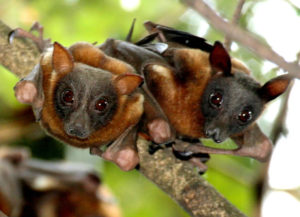By Dr. Beth Leermakers
Although St. Patrick’s Day isn’t associated with animals, the holiday celebrates the Christian missionary who allegedly banished snakes from Ireland. According to legend, St. Patrick chased the reptiles into the sea after they began attacking him while he was on a 40-day fast. However, natural historians refute this story, pointing to the fact that snakes haven’t lived in Ireland for thousands of years. The Ice Age kept the island too cold for the cold-blooded reptiles. After the ice age ended 10,000 years ago, snakes couldn’t traverse the surrounding ocean to reach the island. So, St. Patrick doesn’t deserve credit for making the Emerald Isle snake-free. Ireland is one of a handful of places world-wide that are entirely devoid of snakes. Antarctica, Greenland, Iceland and New Zealand are others.
When I think of St. Patrick’s Day, I envision leprechauns and “luck of the Irish.” In celebration of this shamrock-centric holiday, I’ll highlight a trio of animals believed to be lucky:
Dolphins. Many cultures consider dolphins to be lucky. Christians and Native Americans consider the dolphin to be a symbol of protection and good luck. This association probably dates back to the experience of ancient seamen. Sailors who spent months or even years at sea knew they were close to land when they saw dolphins frolicking around their ship.

Photo courtesy of Bran Park
One special dolphin features prominently in Greek mythology and astronomy. Poseidon, God of the Sea, wanted to marry Amphitrite, a beautiful sea nymph. Rejecting his advances, the sea goddess fled to the far corners of the ocean. Poseidon sent several messengers, including Delphinus the dolphin, to retrieve her. Delphinus found the reluctant nymph and convinced her to marry Poseidon. In gratitude, Poseidon placed the dolphin in the heavens as a constellation.
Crickets. In Chinese, Japanese and Native American cultures, crickets are a symbol of vitality, good fortune and prosperity. In fact, a 2000-year period of Chinese history is known as the Cricket Culture. During three eras in this period, people revered the crickets’ songs (500 BC – 618 AD), kept the vocal insects in cages to enjoy their music (618 – 906 AD) and engaged in cricket fighting as a sport. Prize cricket fighters were treated like elite athletes and fed a precise diet of ground worms and other nutritious morsels.
People from all walks of life — from noblemen to peasant farmers and monks — have kept crickets in cages to enjoy the male cricket’s song (only the males sing). In China and Japan, crickets are valued as “watch dogs” because they stop singing when anyone or anything approaches.
The association between crickets and prosperity in Chinese culture stems from the fact that crickets lay hundreds of eggs. Chinese people believe that having many children is a symbol of vitality and essential for financial success.
In Native American folklore, crickets play several roles. Many South American tribes consider the chirpy critters lucky, while many tribes in the Western U.S. deem them unlucky, especially if they get inside the house. Cheyenne hunters thought crickets could predict the movement of the buffalo herds. In Southeastern tribes such as the Cherokee, crickets are portrayed as gutsy creatures that succeed in life despite their diminutive size.
Crickets are also natural thermostats. Scientists have discovered a relationship between the rate of a cricket’s chirps and the air temperature. Mathematical equations allow you to determine the air temperature by counting the number of cricket chirps. Count the number of chirps in 15 seconds and add 37 to estimate the outside temperature in Fahrenheit.

Photo courtesy of Sydneybats.org.au
Red bats. Bats, considered a symbol of good fortune, are a common subject in Chinese art and household decor. In Mandarin Chinese, the Chinese symbols for “bat” (fu´) are the homonyms of “good fortune” or “blessings.” Five red bats symbolize the “Five Blessings” (aka “Five Good Fortunes”): health, longevity, prosperity, virtue and the desire to die a natural death in old age.
In ancient times, silk fabrics and brocades (e.g., tapestries and imperial robes) often included bat shapes — usually in red (the color of joy). Chinese mothers used to sew small jade, bat-shaped buttons onto their babies’ caps, in hopes of imparting long life.
Bat shapes were also featured in costumes, fabric flowers worn in women’s hair and utensils used for weddings and birthday celebrations. Modern-day Chinese art objects and home décor often feature bat motifs.
How can these animals bring you luck? Dolphins and bats aren’t suitable pets and, although you could keep a cricket in a cage, that may not appeal to you. Instead, you could place a few images of these lucky creatures around your home or office, in hopes they’ll bring you protection, prosperity and good fortune.
